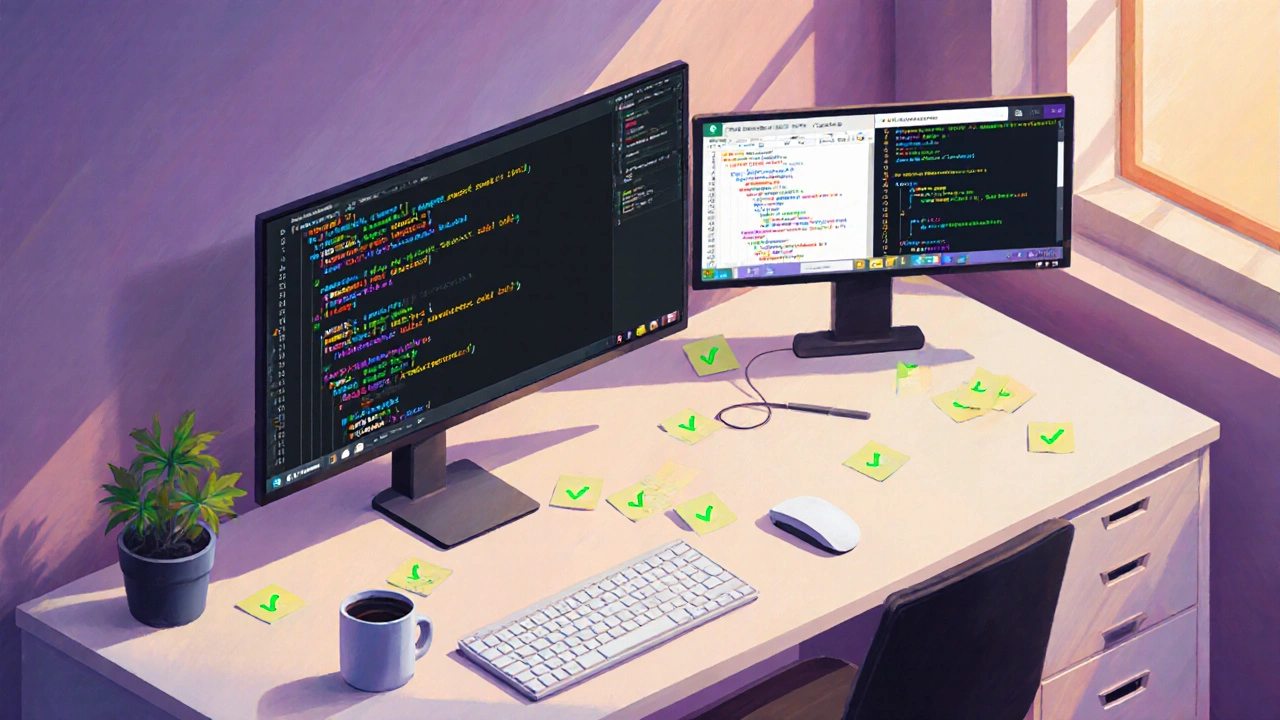Ever stared at a line of code and wondered how anyone could actually make sense of it? You’re not alone. Most people think programming is a mysterious superpower reserved for geniuses, but the truth is far simpler. In this guide we’ll break down the core coding skills you need, map out a clear learning path, and give you practical tools to start building real programs from day one.
What Exactly Are Coding Skills?
Coding skills are the set of abilities that enable a person to translate ideas into computer-executable instructions. They include understanding syntax, logic, problem‑solving techniques, and the tools that help you write and manage code. In other words, coding skills combine knowledge (what does a loop do?) with practice (how do you debug a failing script?).
Core Building Blocks of Programming
Think of coding like learning a new language. You need to master a few fundamental pieces before you can hold a conversation.
- Syntax is the set of rules that dictate how code must be written. Just as grammar guides sentence construction, syntax determines where commas, brackets, and keywords belong.
- Algorithm refers to a step‑by‑step procedure for solving a problem. Whether sorting a list or handling user input, algorithms are the logical backbone of any program.
- Debugging is the process of finding and fixing errors (bugs) in your code. It’s a skill that turns frustration into learning opportunities.
- Version control lets you track changes over time, collaborate with others, and revert to earlier versions when something goes wrong. Git is the most widely used system.
- Integrated Development Environment (IDE) bundles a code editor, debugger, and build tools into one application, streamlining the coding workflow.
Choosing Your First Programming Language
Most beginners ask, “Which language should I start with?” The answer depends on your goals, but three languages consistently rank highest for newcomers because of readability, community support, and job market demand.
| Language | Ease of Learning | Typical Use Cases | Job Demand (2025) |
|---|---|---|---|
| Python | Very High - simple syntax, natural English‑like structure | Data science, web back‑ends, automation | 94,000 open positions worldwide |
| JavaScript | High - a bit more quirks, but essential for web development | Front‑end web apps, Node.js back‑ends, mobile (React Native) | 102,000 open positions worldwide |
| Ruby | High - clean syntax, great for rapid prototyping | Web apps (Ruby on Rails), scripting | 12,000 open positions worldwide |
For most people, Python offers the smoothest entry point. Its readability mirrors plain English, and the massive ecosystem of libraries means you can build useful projects quickly. If you’re drawn to building interactive websites, start with JavaScript. Ruby is a solid secondary choice if you love elegant code and want to dive into the Rails framework.
Setting Up Your Development Environment
Before you write a single line of code, you need a comfortable workspace.
- Install an IDE or code editor. VSCode is free, cross‑platform, and has extensions for Python, JavaScript, and Ruby.
- Get Git on your machine. Create an account on GitHub or GitLab to host your repositories.
- Set up a terminal or command line. Most tutorials will ask you to run commands like
python -m venv envornpm init. - Choose a learning platform (e.g., freeCodeCamp, Coursera, or local community college courses). Consistency matters more than the platform itself.
Once these pieces are in place, you’ll spend most of your time typing in the editor, running scripts, and checking the output-exactly the hands‑on practice that builds confidence.
Effective Learning Strategies for Beginners
Learning to code isn’t just about watching videos; it’s about applying concepts repeatedly.
- Project‑Based Learning: Pick a tiny project-like a to‑do list app or a weather fetcher. Building something tangible forces you to connect theory with practice.
- Spaced Repetition: Review key concepts (loops, conditionals, functions) every few days. Tools like Anki can help store flashcards for syntax rules.
- Pair Programming & Community: Join a coding community on Discord, Reddit, or a local meetup. Explaining code to others solidifies your own understanding.
- Testing Early: Write simple tests (using pytest for Python or Jest for JavaScript) as soon as you create a function. Tests act as safety nets and reveal hidden bugs.
- Read, Then Code: Skim documentation to grasp the big picture, then dive into code. Trying to write before you understand will only create frustration.

Common Pitfalls and How to Overcome Them
Even seasoned developers hit snags. Recognizing these early can save weeks of wasted effort.
- Copy‑Paste without Understanding: Resist the urge to copy whole solutions. Break the code down line by line and explain each part to yourself.
- Skipping Debugging Basics: Learn to read error messages. Use
print()statements or built‑in debuggers to inspect variables at runtime. - Neglecting Version Control: Even for single‑file scripts, commit often. It creates a safety net and teaches disciplined workflow.
- Focusing on One Language Only: While depth matters, expose yourself to multiple paradigms (object‑oriented, functional) to become a more adaptable programmer.
- Burnout: Set realistic goals-30 minutes of coding per day beats a marathon session once a week. Take breaks, walk, and reflect on what you learned.
Quick Checklist: Your First Week of Coding
- ✅ Install VSCode and configure extensions for your chosen language.
- ✅ Set up Git, create a GitHub repository, and push an initial
README.md. - ✅ Complete a basic tutorial that covers variables, loops, and functions.
- ✅ Build a tiny project (e.g., calculator or quote generator) and host it on GitHub Pages or Replit.
- ✅ Join at least one online community and post a question or share your project.
- ✅ Write a simple test for one function in your project.
Tick these boxes, and you’ll have a solid foundation of coding skills that you can expand on for months to come.
Frequently Asked Questions
Do I need a computer science degree to learn coding?
No. While a CS degree provides depth, most coding skills can be acquired through self‑study, online courses, and hands‑on projects. Focus on building a portfolio that showcases what you can do.
How long does it take to become proficient?
It varies, but committing to 1‑2 hours daily typically yields noticeable progress within 3‑4 months. Consistency beats intensity.
Which language should I pick if I want a job in web development?
JavaScript is essential for front‑end work, while Python and Ruby are strong choices for back‑end development. Learning both front‑end (HTML/CSS/JS) and a back‑end language opens the most opportunities.
What is the best way to practice debugging?
Start by deliberately introducing errors in a small script, then use the debugger or print() statements to locate them. Reading stack traces and stepping through code line by line builds intuition.
Can I learn to code without spending money?
Absolutely. Platforms like freeCodeCamp, The Odin Project, and YouTube offer comprehensive curricula at no cost. You only need to invest time and optionally a modest budget for a good keyboard or a cloud IDE.

